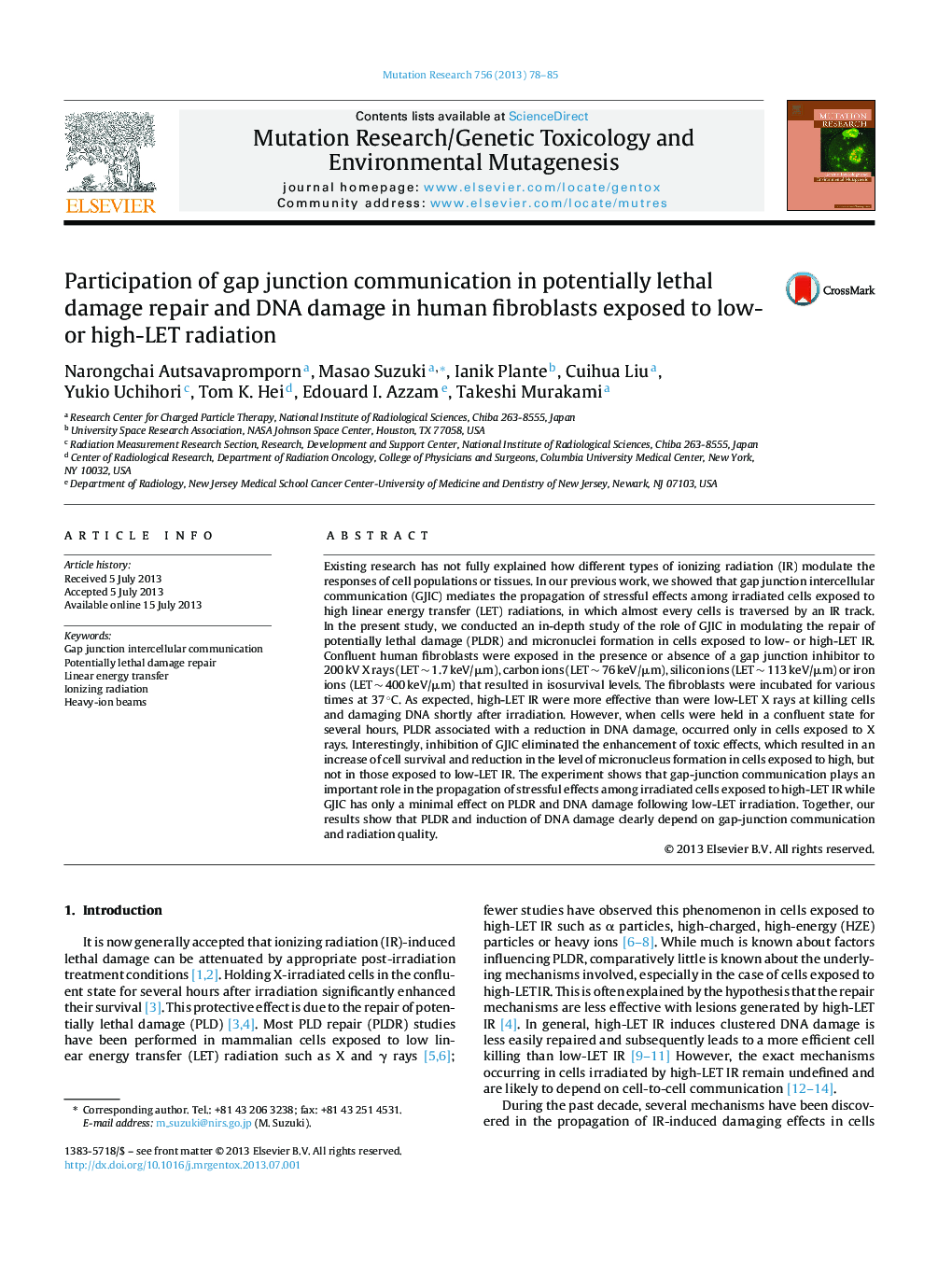| کد مقاله | کد نشریه | سال انتشار | مقاله انگلیسی | نسخه تمام متن |
|---|---|---|---|---|
| 8456504 | 1548603 | 2013 | 8 صفحه PDF | دانلود رایگان |
عنوان انگلیسی مقاله ISI
Participation of gap junction communication in potentially lethal damage repair and DNA damage in human fibroblasts exposed to low- or high-LET radiation
دانلود مقاله + سفارش ترجمه
دانلود مقاله ISI انگلیسی
رایگان برای ایرانیان
کلمات کلیدی
موضوعات مرتبط
علوم زیستی و بیوفناوری
بیوشیمی، ژنتیک و زیست شناسی مولکولی
تحقیقات سرطان
پیش نمایش صفحه اول مقاله

چکیده انگلیسی
Existing research has not fully explained how different types of ionizing radiation (IR) modulate the responses of cell populations or tissues. In our previous work, we showed that gap junction intercellular communication (GJIC) mediates the propagation of stressful effects among irradiated cells exposed to high linear energy transfer (LET) radiations, in which almost every cells is traversed by an IR track. In the present study, we conducted an in-depth study of the role of GJIC in modulating the repair of potentially lethal damage (PLDR) and micronuclei formation in cells exposed to low- or high-LET IR. Confluent human fibroblasts were exposed in the presence or absence of a gap junction inhibitor to 200 kV X rays (LET â¼Â 1.7 keV/μm), carbon ions (LET â¼Â 76 keV/μm), silicon ions (LET â¼Â 113 keV/μm) or iron ions (LET â¼Â 400 keV/μm) that resulted in isosurvival levels. The fibroblasts were incubated for various times at 37 °C. As expected, high-LET IR were more effective than were low-LET X rays at killing cells and damaging DNA shortly after irradiation. However, when cells were held in a confluent state for several hours, PLDR associated with a reduction in DNA damage, occurred only in cells exposed to X rays. Interestingly, inhibition of GJIC eliminated the enhancement of toxic effects, which resulted in an increase of cell survival and reduction in the level of micronucleus formation in cells exposed to high, but not in those exposed to low-LET IR. The experiment shows that gap-junction communication plays an important role in the propagation of stressful effects among irradiated cells exposed to high-LET IR while GJIC has only a minimal effect on PLDR and DNA damage following low-LET irradiation. Together, our results show that PLDR and induction of DNA damage clearly depend on gap-junction communication and radiation quality.
ناشر
Database: Elsevier - ScienceDirect (ساینس دایرکت)
Journal: Mutation Research/Genetic Toxicology and Environmental Mutagenesis - Volume 756, Issues 1â2, 30 August 2013, Pages 78-85
Journal: Mutation Research/Genetic Toxicology and Environmental Mutagenesis - Volume 756, Issues 1â2, 30 August 2013, Pages 78-85
نویسندگان
Narongchai Autsavapromporn, Masao Suzuki, Ianik Plante, Cuihua Liu, Yukio Uchihori, Tom K. Hei, Edouard I. Azzam, Takeshi Murakami,